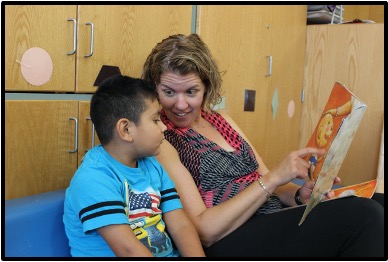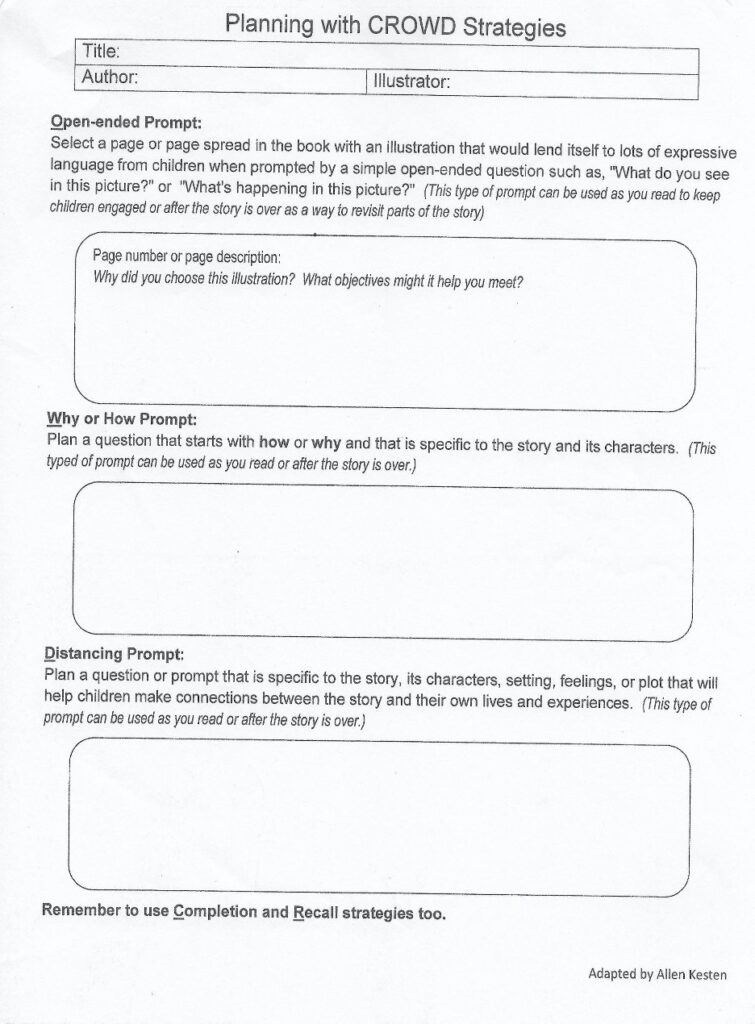Dialogic Reading
Dialogic Reading is an interactive reading strategy that encourages educators to ask questions and prompt discussions during a read-aloud. There are different types of prompts that can be used to help children connect with the text. Use the planning sheet on the next page to plan your prompts

Note: Each Dialogic Reading doesn’t need to include every CROWD strategy. In fact, you may decide to read a book all the way through at the first reading. Select one, two or a few strategies that feel appropriate for each read aloud (text type, read aloud purpose, group abilities, etc. Over time, as children develop dialogic read-aloud skills, the type and amount of CROWD strategies used can be adapted to meet their abilities.
CROWD Strategies
C – Completion Prompts – Leave a ‘blank’ at the end of the sentence and invite the child (ren) to fill it in. Focus on language structures (rhyme and repetition).
R – Recall Prompts – Ask questions about what happened in the book, or earlier in the book. Focus on plot and sequencing.
O – Open-ended Prompts – Invite children to express their ideas by asking questions that have no clear answers. Focus on the pictures (“Tell me about . . .”) and predictions and hypotheses (“I wonder . . .”).
W – Wh Prompts – Ask what, where, when, why, and how. Focus on questions that start with WHY and HOW.
D – Distancing Prompts – Ask children to relate pictures and words to their own experiences in the world (Have you ever . . .”).
Use the CROWD Planning Sheet in advance to prepare for Dialogic Reading. Use post-it notes to strategically place CROWD prompts on pages of the book to remember when and what to ask the group. Save completed planning sheets and post-its to build a CROWD strategies archive for future reference! During CROWD Strategy work, take children back to the text to confirm and process their questions. Invite children, especially for repetitive books, or a book you have read several times, to join you in reading the words.

